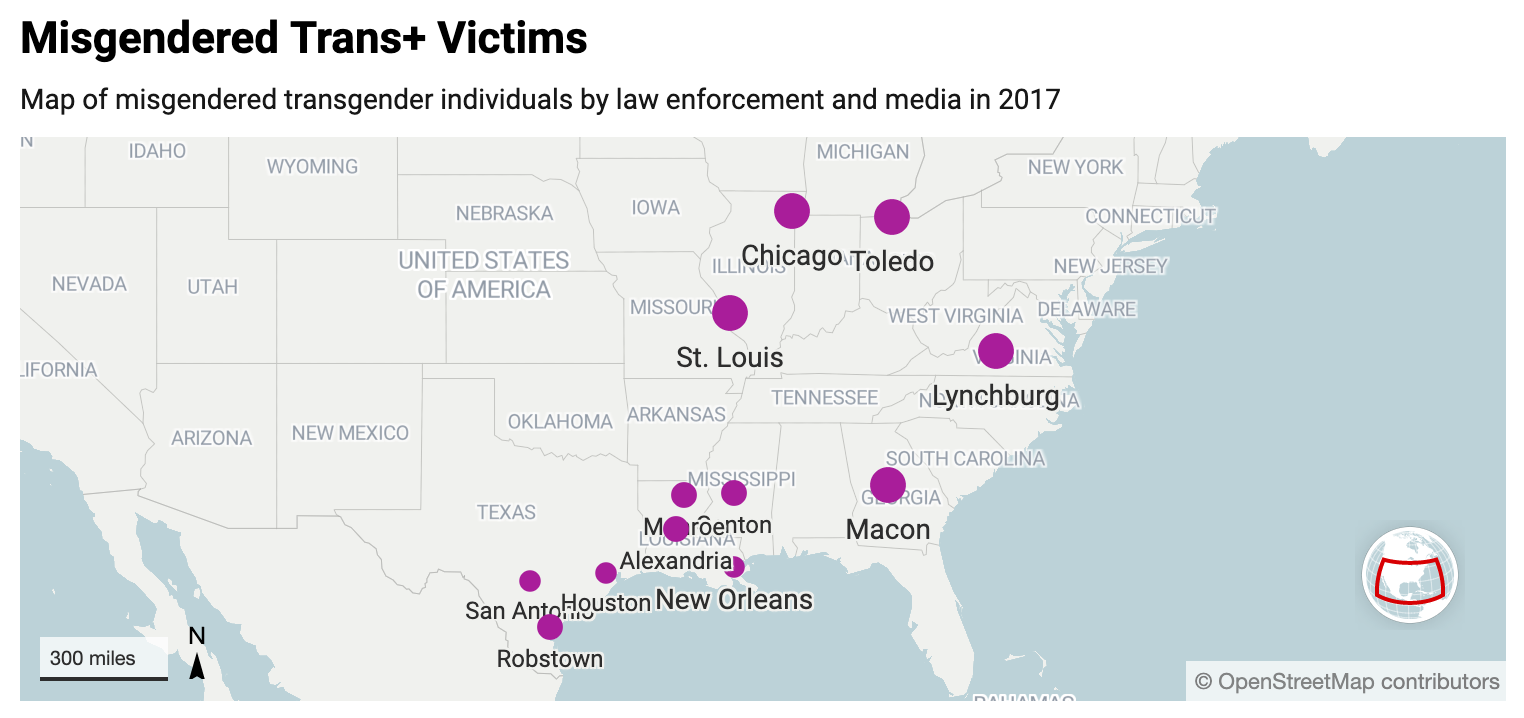Rising Homicide Rates Devastates Trans+ Community
Hate crimes have been on the rise for members within the trans+ community in recent years, having doubled in the short span of just three years.
The LGBTQ+ community has been caught in the crossfires of hatred & political discourse in recent years, which has led to increased demand for visibility for its people.
This was the case for Ashanti Carmon, who was murdered in a shooting the day before Transgender Day of Visibility. Murdered in Prince George’s County, Md., the community was devastated.
Carmon was a beacon of light for the people closest to her. This truly devastated the close-knit community of trans+ individuals in D.C. and Maryland, according to Earline Budd, case manager at HIPS.
HIPS is a non-profit organization that aims to “enhance community, health, and individual wellness” for individuals and communities impacted by sexual exchange and/or drug use.
Budd has been an advocate for the LGBTQ+ community for the past 20 years, having served as the first transgender women at the Office of Human Rights. Before this, she was a founding member and Executive Director of D.C.’s only agency working exclusively with transgenders: Transgender Health Empowerment, Inc., (T.H.E.).
Trans+ individuals face issues unique to other members within the LGBTQ+ community, who are often facing higher rates of stigma, according to the Human Rights Campaign (HRC).
“We try to stick with each other because only my closest friends truly understand the daily struggles I face,” says Alex Yanuzzi, a transgender student at American University. “For example, not having easy access to gender-neutral bathrooms in my dorm is a real struggle.”
Social structures, familial hardships, lack of representation, and harmful political agendas are some of the main causes of anti-trans stigma, according to HRC.
Rising rates of bias-motivated homicides within the LGBTQ community are a true concern. It is very disproportionate for the trans+ community, where in 2014 there was only 69 homicides. In 2017, this number skyrocketed to 119 homicides.
Nearly a 60% increase, it is very clear that more attention must be drawn to the trans+ community who are disproportionately being murdered in comparison to other groups within the LGBTQ+ community.
Anti-lesbian homicides have actually gone down compared to the sharp contrast of rising homicides amongst the trans+ community.
Part of the issue, as explained by Jordan Dashow of HRC, is that many trans+ individuals often are misgendered by police and media. In addition, the FBI does not require for agencies to report hate crimes, which Dashow predicts FBI’s numbers on trans+ homicides are only a “fraction of such violence.”
After transgender Matthew Shepard was killed in 2009, The Matthew Shepard and James Byrd, JR., Hate Crimes Prevention Act was enacted to try and curb the high rates of murders in the trans+ community.
The Trump administration have been attempting to provide health care providers the option on whether or not they choose to treat trans individuals. This provides faith-based health organizations more autonomy with transgender individuals, according to a recent article published by Ariana Cha, Washington Post journalist.
Health care within the trans community is not focused on nearly enough by the administration. They are human beings too who deserve the same proper treatment as everyone else, according to German Lopez, writer for Vox.
Nearly a decade after the Shepard Act, hate-crimes across the board are only increasing. This can be observed by taking one look at FBI’s statistics on hate crimes online. Of these statistics, stood out the high reporting of gay homicides.
While they may occur more frequently, it is important to keep in mind again that many transgender homicides often go unreported as part of the community for a multitude of reasons, ranging from family to misgendering.
The Equal Employment Opportunity Commission (EEOC) is one of many examples of laws that attempt to help solve the issue at hand, but are not direct enough in their language which allows for too many loopholes of discriminatory cases that go unheard within the trans community, according to a letter sent on behalf of the American Medical Association sharing their concerns with the administration supporting harmful anti-trans rhetoric. One other example of the loopholes is the Gender Recognition Act (GRA) in the United Kingdom, which only allows for a gender transition only after having to medically prove they have gender dysmorphia.
Unfortunately, anti-trans policies disproportionately affect trans women of color, according to analyzation of data I did from publicly available data through the National Coalition of Anti-Violence Programs (NCAVP). Of the 52 LGBTQ+ homicide victims profiled, half were transwomen.
Of these transwomen, 20 were black and three were LatinX. This statistic can be viewed below in a map that demonstrates just how vast of an issue these rising homicide rates are.
More attention must be brought to these transwomen of color. The lack of current political commentary is felt in waves amongst these communities. This dehumanizing process should not exist. Of those women killed, almost all were shot in passing just going to the grocery store or driving home for work.
Not only were they innocently killed, but they were continued to be disgraced by media and police, who misgendered nearly half of these 26 trans people, according to the data from NCAVP. How many more people must die for the administration to wake up and do something about it?
Data covered by NCAVP is only snapshot of the vast homicides across the country amongst the trans+ community, which can often lead to the misgendering observed by this map.
Budd, along with everyone touched by Carmon, had a vigil this past weekend to honor her memory.
